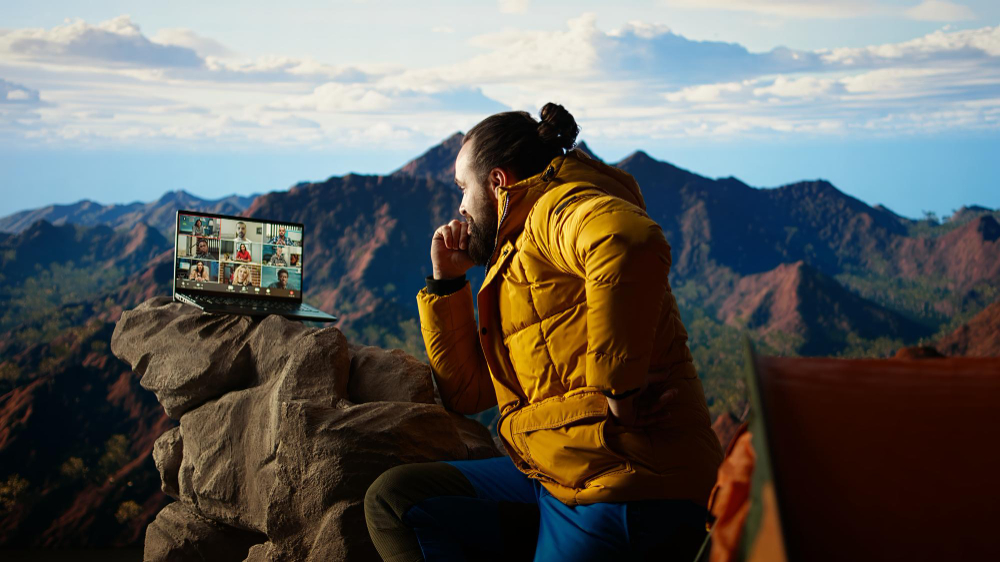👋 Welcome!
Mode Activated: 📝 Article Mode
Let’s create a fully SEO-optimized long-form article for your keyword:
“Adventure Travel vs Regular Tourism — What’s the Difference?”
Comprehensive SEO Outline
| Heading Level | Section Title |
|---|---|
| H1 | Adventure Travel vs Regular Tourism — What’s the Difference? |
| H2 | Introduction: Two Ways to Explore the World |
| H2 | Understanding Adventure Travel |
| H3 | Definition and Core Concept |
| H3 | Types of Adventure Travel (Soft vs. Hard Adventures) |
| H3 | Examples of Popular Adventure Activities |
| H2 | Understanding Regular Tourism |
| H3 | What Defines Traditional or Regular Tourism |
| H3 | Types of Regular Tourism Experiences |
| H3 | Benefits of Conventional Travel |
| H2 | Key Differences Between Adventure Travel and Regular Tourism |
| H3 | Purpose and Motivation |
| H3 | Level of Risk and Physical Involvement |
| H3 | Destination and Environment |
| H3 | Cultural and Personal Interaction |
| H3 | Budget, Planning, and Comfort Levels |
| H2 | Adventure Travel vs Regular Tourism: Comparison Table |
| H2 | Why Adventure Travel is Gaining Popularity |
| H3 | Rise of Sustainable and Experiential Travel |
| H3 | Emotional and Health Benefits of Adventure Trips |
| H2 | Is Adventure Travel for Everyone? |
| H3 | Who Should Try It |
| H3 | Essential Tips for First-Time Adventure Travelers |
| H2 | How Regular Tourism Complements Adventure Travel |
| H3 | Blending Both for a Balanced Travel Experience |
| H2 | FAQs About Adventure Travel vs Regular Tourism |
| H2 | Conclusion: Choosing the Travel Style That Fits You Best |
Adventure Travel vs Regular Tourism — What’s the Difference?
SEO Title: Adventure Travel vs Regular Tourism — Key Differences Explained for Modern Explorers
Meta Description: Discover the real difference between adventure travel and regular tourism. Learn what makes each unique and decide which travel style suits your spirit best.
Introduction: Two Ways to Explore the World
Travel means something different to everyone. Some travelers crave comfort, sightseeing, and guided tours, while others chase adrenaline, nature, and personal challenges.
This is where adventure travel and regular tourism diverge. Both offer valuable experiences, but their goals, methods, and mindsets couldn’t be more different. In this guide, we’ll break down adventure travel vs regular tourism, helping you decide which fits your travel personality.
Understanding Adventure Travel
Definition and Core Concept
Adventure travel is all about exploring the unknown. It involves physical activity, cultural immersion, and a sense of risk or challenge. Instead of sticking to tourist trails, adventure travelers seek authentic, hands-on experiences — from trekking remote mountains to diving with marine life.
Types of Adventure Travel (Soft vs. Hard Adventures)
- Soft Adventure: Activities like hiking, kayaking, or wildlife safaris — physically manageable but still thrilling.
- Hard Adventure: Demanding pursuits like rock climbing, mountaineering, or whitewater rafting — meant for seasoned adventurers.
Examples of Popular Adventure Activities
- Trekking in Nepal’s Himalayas
- Scuba diving in the Maldives
- Ziplining through Costa Rica’s rainforests
- Cycling across Europe’s mountain passes
Adventure travel pushes boundaries and offers personal growth through exploration and challenge.
Understanding Regular Tourism
What Defines Traditional or Regular Tourism
Regular tourism — often known as mass tourism — focuses on comfort, convenience, and leisure. Travelers follow pre-planned itineraries, visit popular landmarks, and stay in hotels or resorts with modern amenities.
Types of Regular Tourism Experiences
- Cultural Tourism: Visiting museums, monuments, and heritage sites
- Beach Holidays: Relaxing by the coast with minimal physical effort
- City Tours: Exploring urban centers through guided tours and shopping
Benefits of Conventional Travel
- Predictable and safe
- Requires minimal physical effort
- Great for families, beginners, or those seeking relaxation
- Often more budget-friendly and structured
Regular tourism provides comfort and relaxation, while adventure travel offers unpredictability and excitement.
Key Differences Between Adventure Travel and Regular Tourism
Purpose and Motivation
Adventure travelers seek self-discovery, thrill, and immersion, while regular tourists often prioritize comfort and sightseeing.
Level of Risk and Physical Involvement
Adventure trips usually involve physical activity and a certain degree of risk (e.g., hiking, rafting), whereas regular tourism focuses on low-risk and guided experiences.
Destination and Environment
Adventure travel favors remote, off-the-beaten-path locations like mountains, deserts, or jungles. Regular tourism centers around cities, resorts, or famous landmarks.
Cultural and Personal Interaction
Adventure travelers often live like locals, learning languages and engaging in community experiences. Tourists typically observe culture from a distance — through guided tours or cultural shows.
Budget, Planning, and Comfort Levels
Adventure travel may require custom planning and flexibility, while regular tourism follows fixed packages and itineraries. Comfort levels are also vastly different — adventure travelers might camp under the stars, while tourists prefer hotels and guided transport.
Adventure Travel vs Regular Tourism: Comparison Table
| Aspect | Adventure Travel | Regular Tourism |
|---|---|---|
| Purpose | Challenge, discovery, immersion | Relaxation, comfort, leisure |
| Physical Activity | Moderate to high | Low to minimal |
| Risk Level | Medium to high | Low |
| Destinations | Remote, natural, wild | Urban, famous, accessible |
| Accommodation | Tents, lodges, local stays | Hotels, resorts, cruises |
| Flexibility | Highly flexible | Fixed itinerary |
| Cultural Interaction | Deep and authentic | Surface-level or guided |
| Cost Range | Variable (depends on gear/travel) | Predictable and budgetable |
Why Adventure Travel is Gaining Popularity
Rise of Sustainable and Experiential Travel
Modern travelers are shifting toward sustainable tourism — seeking meaningful experiences that protect nature and empower local communities. Adventure travel aligns perfectly with this movement.
Emotional and Health Benefits of Adventure Trips
Adventure travel improves mental health, builds resilience, and enhances creativity. Activities like hiking and diving connect travelers deeply with the natural world, offering a form of meditation through motion.
Is Adventure Travel for Everyone?
Who Should Try It
Anyone with curiosity and an open mind can enjoy adventure travel. It’s not about physical strength — it’s about mindset, adaptability, and a willingness to learn.
Essential Tips for First-Time Adventure Travelers
- Start small — try hiking or camping before tackling high-altitude treks.
- Invest in quality gear and safety equipment.
- Research weather and local customs.
- Travel responsibly — leave no trace.
Adventure travel isn’t just for thrill-seekers; it’s for anyone ready to step out of their comfort zone.
How Regular Tourism Complements Adventure Travel
Blending Both for a Balanced Travel Experience
You don’t have to choose one over the other. Many travelers combine both styles — spending part of their trip relaxing at a resort and the rest exploring nature trails or local villages.
A mix of adventure and leisure creates the perfect balance between challenge and comfort, ensuring every journey feels complete.
FAQs About Adventure Travel vs Regular Tourism
Q1. What makes adventure travel different from regular tourism?
Adventure travel focuses on exploration, risk, and physical engagement, while regular tourism centers on comfort and sightseeing.
Q2. Is adventure travel more expensive?
Not necessarily — it depends on the destination and activity. Backpacking treks can be cheaper than luxury resort stays.
Q3. Can families enjoy adventure travel?
Yes! Many destinations offer family-friendly adventures like guided hikes, safaris, or kayaking trips.
Q4. Is adventure travel safe?
With the right preparation, gear, and local guides, it’s perfectly safe. Safety training and insurance are always recommended.
Q5. Which type of travel is better for the environment?
Adventure travel tends to support eco-tourism, especially when travelers follow sustainable practices.
Q6. How can I start adventure traveling as a beginner?
Begin with short, guided adventures — like camping, rafting, or hiking — before attempting advanced expeditions.
Conclusion: Choosing the Travel Style That Fits You Best
In the end, adventure travel vs regular tourism isn’t about which is better — it’s about what fulfills you most.
If you seek comfort, structure, and relaxation, regular tourism is your path. But if you crave excitement, challenge, and self-discovery, adventure travel will awaken your spirit in ways you never imagined.
Whichever you choose, remember: the goal of travel isn’t just to see the world — it’s to experience it deeply, meaningfully, and responsibly. 🌍✨
External Source:
For more insights, visit Adventure Travel Trade Association (ATTA).










